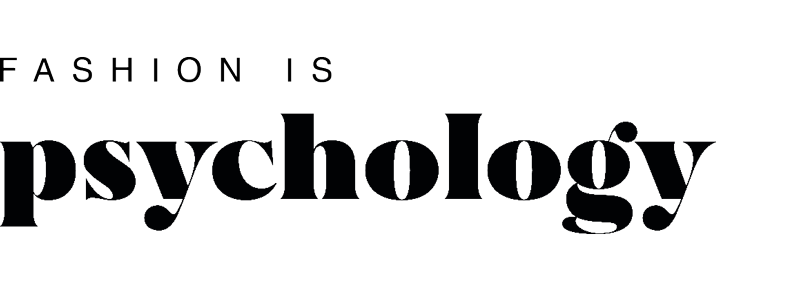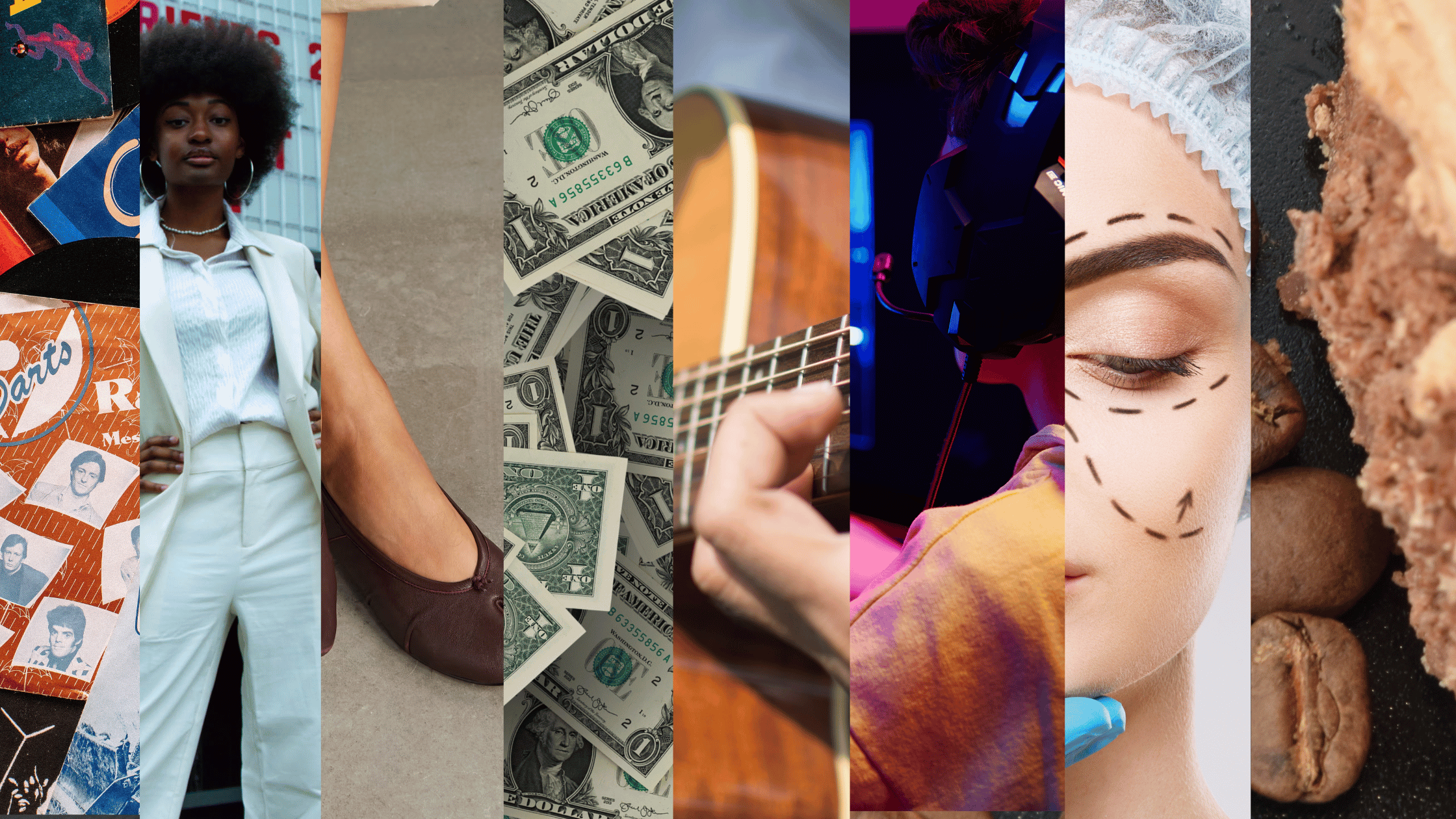The Fashion is Psychology 2025 Prediction Report offers an in-depth look at the psychological forces shaping consumer behaviour in the year ahead. Covering 9 key trends—Mocha Mousse, Retro Tech, Hyper Personalisation, Power Dressing Revisited, Smart Self-Care, Tweak for Me, Impractical Footwear, Extra Hot Pants, and Gaming for Good—the report goes beyond surface-level observations to uncover the deeper motivations driving purchasing decisions.
While many prediction reports focus solely on economic or aesthetic factors, this report stands out by incorporating peer-reviewed psychological research, providing valuable insights into how our emotions, identities, and cognitive processes shape our choices. Supported by statistics on year-over-year consumer purchasing trends from Afterpay and Clearpay*, it’s a must-read for anyone seeking to understand the evolving landscape of consumer behaviour in 2025.
1. Mocha Mousse
Shoppers have been cosying up to shades of Mocha Mousse, Pantone’s colour of the year, in a big way. According to Afterpay, purchases of brown trousers have increased by a whopping 700% year over year (YoY) among US shoppers. Colour psychology studies have long associated brown hues with traits such as wholesomeness and groundedness, and the Evolutionary Valence Theory suggests that this association stems from the colour’s relationship to the earth.
When considering shades, lighter shades of brown will be favoured over dark chocolatey hues. Call it the Daniel Lee effect, but I can’t help but think Burberry’s revamp has reignited passion for this classic beige shade and its accompanying heritage check. The prevalence of brown may suggest that shoppers are looking at new ways to self-soothe by shrouding themselves in calming colours, and serving brown in suede fabric will only enhance this feeling. Heuritech notes that sales of suede fabric are expected to grow by 17% among women, with suede loathers expected to increase by 30%. Textile research reveals that we tend to reach for visually appealing fabrics when happy and physically soothing materials when sad—the rise of soft suede fabrics alongside brown underlines tranquillity as the key theme for 2025.
2. Retro Tech
Nostalgic items will always be on end-of-year trending lists for one main reason – they make us feel good. Nostalgia refers to a sentimental longing for moments from the past, and scientific evidence proves that nostalgia supports our “ability to find, maintain, and restore meaning in life”. The warm, connected, and reassured feeling that nostalgia provides has been found across ages and cultures. We always look back on the past through rose-coloured glasses; the same applies to products that trigger these memories. In 2025, these products will take the shape of retro technology. According to Clearpay, in the UK, sales of digital cameras have increased by a staggering 209% year over year, while music players, wired headphones, and flip phones have increased by 54%, 24% and 19%, respectively.
3. Hyper Personalisation
The endowment effect is the tendency for people to value an item more and be more attached to it by virtue of owning it. It’s the reason why you’re perplexed that your 2010 Jane Norman bag won’t sell on Vinted, eBay or Depop even though you’ve priced it at a measly (read: ridiculous) £100. Interestingly, little discussion occurs surrounding the influence of customisation over perceived ownership. Time and personalisation have the same effect. In many instances, adding personal touches to your belongings is akin to owning them for 5+ years, similar to stamping on a name tag. You’ve solidified your ownership and, by extension, have raised the product’s perceived value by injecting an element of your identity into it.
As conversations surrounding the curation of mindful wardrobes continue to gain traction, next year, many people will fall back in love with their existing wardrobes. This newfound romance will cause people to turn to thoughtfully chosen accessories and jewellery to zhuzh up what they already own and satisfy their ingrained desire to be unique. Sales of bag charms are up 329%, shoelace charms are up 525%, and scarves and keychains are up 100% and 43% YoY among Afterpay’s US consumer base.
As AI becomes more integrated into our daily lives, in 2025, shoppers will search for heightened levels of personalisation to add more value to their shopping experiences. Research from McKinsey found that 71% of consumers expect personalised interactions from companies, and 76% experience frustration when they don’t get it. Individualised loyalty programs and spot-on product recommendations specified to your budget will help people embrace an often overlooked aspect of sustainability – truly valuing your purchase long post-purchase.
4. Power dressing revisited
2025 is the year we officially break up with COVID’s casualisation and turn the clock back to the Power Dressing era. Women’s issues have been a central global point of contention for most of 2024. Red pill content has become so cartoonishly evil and pervasive while women’s rights have been debated, contested and outright removed in several countries around the world. These issues mirror the gender discrimination, reproductive rights removals and sexual harassment of the 1960s that preceded the powder dressing movement of the 70s.
Fashion has always been political. The current prevalence of business attire, blazers, ties, and oversized suits symbolises a generation of women keen to cement their power in an era where it’s continuously contested. Shoppers are buying into the movement. In the UK, the 2024 Interpath Retail Index found businesswear retailers Moss Bros, Me & Em, and Self Portrait to be among the country’s fastest-growing retailers, and their popularity is expected to rise in 2025.
Bella Hadid wearing a suit and tie at Saint Laurent’s spring/summer 2025 runway show, Zendaya’s Ralph Lauren blazer over a blue button-down shirt and tie, and Ayo Edebiri in a Bottega trench and burgundy tie are all classic examples of the masculinisation of the office siren trend. We’re witnessing a shift from comfort through cosiness to comfort through power. They may not be as big as they once were, but shoulder pads have once again been picked up to help shatter yet another glass ceiling.
5. Smart Self-Care
A hot bubble bath and a cup of tea simply won’t cut it anymore. In 2025, self-awareness will be the new self-care and that awareness will be data-driven. Afterpay reveals that the Oura Ring, a wearable health tracker that monitors over 20 biometrics, is up 500% in YoY sales among US shoppers. Across the pond, Clearpay has found UK shoppers obsessed with smartwatches and even smart beds, up 43% and 47% YoY. A decline in trust in medical professionals between 2020 and early 2024 may have contributed to the demand for wellness technology. Luckily, the 2024 Edelman Trust Barometer Special Report indicates a swing back to trust in medical professionals, suggesting that informed health decisions supported by licensed professionals will be top of mind in 2025.
Next year, creative outlets and hobbies will firmly fall under the self-care category. Afterpay reveals that sales of musical instruments have increased 483% YoY. Playing music, regardless of skill level, has a positive influence on anxiety and depression, two conditions that have been trending upward since 2019. In 2025, people will arm themselves with the tools they need to improve their physical and mental health.
6. Tweak For Me
The concept of look-good-feel-good has entered the technological revolution. Enter the age of the at-home tweakment. A tweakment is a non-surgical cosmetic procedure that subtly enhances a person’s appearance; once reserved for stars and celebrities, this kind of enhancement has become even more accessible. Google searches for “tweakments” have increased by 6% this year, and buying behaviours follow suit. People are taking tweakments into their own hands, and at-home equipment like LED masks are up 6%, the Medicube Age-R booster pro is up 100%, and Microcurrent devices are up 275% in YoY sales among US-based Afterpay shoppers. These devices promise to help you achieve your skin goals by tightening and brightening the skin through various stimulation methods. According to research in Current Psychology, there has been an “underlying societal moralisation of plastic surgery”, causing many to perceive drastic changes as “unnatural”. As a result, subtle changes are set to be ever-popular in 2025.
7. Impractical Footwear
If the resurgence of power dressing indicated the end of casualisation, then the impractical footwear trend is the final nail in the coffin. Maison Margiela revived their 1988 Tabi flats in 2023, and as how most things in fashion go, the style was first side-eyed before trickling down and being fully embraced by the masses. While the hoof style wasn’t everyone’s cup of tea, flats have gained considerable traction. Ballet pumps have seen a dramatic increase in popularity, increasing 200% YoY among US-based Afterpay shoppers.
You can undoubtedly get more pep in your step from a flat than a kitten heel, but my fellow flat-footed friends shuddered at the resurgence of ballet pumps. The flatness of pumps places more strain on the soft tissues that support the foot arch, which can strain the tendons and joints in your feet – not very practical in the long run. Speaking of impracticality, furry shoes will be bigger in 2025 now that enough time has passed to allow the trickle-down from the runways of Simone Rocha, Ferragamo and the like to turn into a flood. Weatherproof? No. Functional? Nope. Practical? Nah. Comfortable? Perhaps. As we’ve seen leopard print slowly become a neutral, the rise of impractical footwear trends is another example of people looking for new ways to showcase their individuality while remaining part of the current cultural zeitgeist.
8. Extra Hot Pants
According to the Organisation for Economic Co-operation and Development, the global GDP is set to see a growth of 3.3% in 2025, up from 3.2% in 2024. Similarly, JP Morgan is also predicting a strong economic future for 2025. Many of us struggled financially last year; the forecast suggests that things are tracking upwards, and so are our hemlines.
The Hemline Index is a theory linking women’s hemlines to economic cycles, first proposed by economist George Taylor in 1926. It suggests that during economic prosperity, hemlines rise, reflecting confidence, while downturns see longer, modest styles. Hot pants, emblematic of boldness and optimism, are predicted to dominate 2025 trends, driven by economic recovery, the popularity of Y2K-inspired fashion, and empowerment movements like body positivity. Heuritech is foreseeing a 7% increase in the popularity of hot pants next spring, and interest in the new Gen Z staple piece is set to double by summer. Their resurgence aligns with the Hemline Index, reflecting a cultural shift toward joy, confidence, and expressive fashion as optimism returns globally.
9. Gaming For Good
It’s time to stop chastising my niece for spending too much time on Dress to Impress. As it turns out, the multiplayer Roblox game isn’t doing as much harm as I thought. In fact, it’s doing the opposite. A new report by the University of Hudson found that online gaming “can actually help people develop valuable workplace skills.” The study revealed that gaming encourages players to problem-solve, providing them with increased resilience and perseverance when faced with real-world problems. In 2025, the benefits of gaming will outweigh any negatives, and as more people tap in, the need to customise (see benefits above) and glamourise avatars will increase. According to Pinterest Predict’s 2025 forecast, trending search terms for Avatar codes and cute outfit codes are up 45% and 30%, respectively. In 2025, the growing trend of dressing up game avatars highlights the rising popularity of gaming as a source of psychological benefits like improved executive functioning skills and creative expression, offering a much-needed escape and mental resilience in today’s increasingly complex world.
As consumers become more advanced in 2025, understanding the psychological factors behind purchasing decisions will be more crucial than ever. To help you navigate this evolving landscape, our online courses provide invaluable tools for uncovering the “why” behind what we buy. Whether you’re a business leader, marketer, or curious consumer, these courses will equip you with the knowledge to understand and adapt to the deeper drivers of consumer behavior in this rapidly changing world.
For press requests or information on consultancy, email info@psychologyoffashion.co.uk
*Clearpay UK sales data compares Monday, November 27, 2023 — Saturday, December 2, 2023 vs. Monday, November 25, 2024 — Saturday, November 30, 2024



